Embarking on the Path to Serenity: A Life-Long Yogi’s Mindful Travel Guidance to Choosing Yoga Retreats Part 1
Introduction
Embark on a transformative journey with us as we delve into the heart of mindful travel guidance. This guide is a yogi’s compass—a sacred map steering you to the sanctuary of your inner self through the choice of an ideal yoga retreat.
With the wisdom of a seasoned yoga instructor and the insight of an experienced retreat leader, we will unveil the essence of yoga retreats that resonate with the spirit of Sadhana (spiritual practice) and savor the nectar of Dhyana (meditation).
Let us be your guide as you traverse this path of enlightenment.
Understanding the Soul of Yoga Retreats
The Philosophy Behind Yoga Retreats
Explore the ancient roots of yoga retreats and how they serve as pilgrimages toward inner peace and self-discovery.
The Philosophy Behind Yoga Retreats
Yoga retreats are modern iterations of a time-honored tradition where individuals withdraw from their routine existence to engage in focused spiritual practice.
Historically, such retreats originated in various cultures and spiritual traditions, including the Christian monastic retreat, the Islamic Sufi retreat known as halwa, and the Buddhist Vipassana retreat.
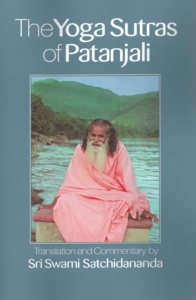 In Hinduism and the yogic tradition, the retreat concept can be linked to tapas, an element of the Niyamas (observances) in Patanjali’s Yoga Sutras. Tapas involves the disciplined use of energy and a commitment to spiritual growth, often through retreat and solitude. Ashrams, spiritual hermitages or monasteries in Indian religions, are traditional settings where individuals might seek spiritual instruction and practice asceticism.
In Hinduism and the yogic tradition, the retreat concept can be linked to tapas, an element of the Niyamas (observances) in Patanjali’s Yoga Sutras. Tapas involves the disciplined use of energy and a commitment to spiritual growth, often through retreat and solitude. Ashrams, spiritual hermitages or monasteries in Indian religions, are traditional settings where individuals might seek spiritual instruction and practice asceticism.
Modern yoga retreats are designed to provide a sanctuary away from the distractions and stresses of daily life. They are intended to create an environment conducive to growth, healing, and inner exploration. The participants immerse themselves in yoga asanas (postures), pranayama (breath control), meditation, and other disciplines such as Ayurveda, chanting, and ceremonies. Retreats vary widely in focus and intensity; some emphasize physical rigor and detoxification, while others prioritize meditation and relaxation.
The philosophical underpinning of yoga retreats often involves the idea of the sangha or community. Here, practitioners share space and experience, supporting each other’s growth and practicing seva, or selfless service, thus enhancing the collective energy and connection. This reflects the yoga principle of unity or oneness.
Another philosophical aspect of yoga retreats is Svadhyaya, or self-study. Retreats offer the chance to step back from daily roles and habits to engage in introspection. This self-reflection can lead to deeper self-awareness and understanding, often facilitated by the guidance of experienced teachers.
The intention behind the retreat is also vital. For many, a yoga retreat is an opportunity to deepen one’s practice beyond the physical aspects, delving into yoga’s more meditative and transformative practices. It’s a time to connect to the ‘inner self’ that often gets lost in the hectic pace of life, an opportunity for participants to re-align with their values and purpose.
In selecting a yoga retreat, it becomes crucial to consider these philosophical elements. The ideal retreat will resonate with the individual’s intent for their practice – to develop strength and flexibility, nurture mental peace and clarity, or pursue spiritual growth. The choice of location, the guides’ expertise, the participants’ community, and the retreat’s schedule and activities should all advance the practitioner on their path to serenity.
AFFILIATE DISCLAIMER:
This site contains affiliate links to products, online events, and tools for personal & professional transformation from Sounds True. The Shift Network, MindValley, Evolving Wisdom, Positive Psychology, mindbodygreen, and other reputable and consciously aligned personal development, spiritual growth, and transformational companies. We set ourselves apart by vetting teachings and resources calibrated to be of higher consciousness, meaning upward-lifting, positively oriented, and constructive. We may receive a commission for purchases made through these links.
Discover Everything You Need To Know To Create An At-Home Yoga Practice That Sustains You
I have been doing yoga for 30 years. I have had teachers of all kinds. Taking lessons from [Tara] has been more useful to me than taking yoga from anyone else.
One of the things I like about Tara is her ability to make yoga accessible to people who might be scared of it or think it might be too esoteric.
The Complete Guide To Yoga from mindbodygreen
By enrolling in this class with Tara Stiles & Michael Taylor, you’ll gain imperative knowledge on how to:
- Breathe for improved energy.
- Properly position yourself to get the most benefit out of each pose.
- Bend yourself into positions that you never thought you could.
You will receive:
- 10 modules and 114 video lessons, filled with all the information you need
- A comprehensive guide covering fundamental and advanced yoga practices
- Tips and tricks for improving your technique
- Lifetime access to stream from your computer, phone, or tablet
Explore the Various Types of Retreats
Let’s illuminate the spectrum of retreats available—anusara to zen—and what uniquely characterizes them within the yogic tradition.
The Various Types of Retreats
Within the rich tapestry of the yogic tradition, retreats cater to a diverse range of practices and preferences, offering a breadth of experiences that can be tailored to the personal journey of any practitioner. The variety in yoga retreats mirrors the multifaceted nature of yoga, encompassing the practice’s physical, mental, and spiritual dimensions.
Anusara Retreats focuses on a relatively modern system of yoga that is heart-centered and alignment-oriented. Introduced by John Friend in 1997, Anusara combines a philosophy derived from Tantra with Universal Principles of Alignment. Retreats based on Anusara yoga typically foster a supportive atmosphere where the individual’s yoga experience is intertwined with the community’s collective energy. They are suited for those seeking to engage with yoga in a celebratory, life-affirming manner while focusing on precise biomechanical alignment. Explore Anusara Yoga Retreats here.
Ashtanga Retreats attract those inclined towards a more physically demanding and strictly structured practice. Based on the teachings of K. Pattabhi Jois, Ashtanga yoga involves synchronizing the breath with a progressive series of postures—a process producing intense internal heat and a purifying sweat. Retreats grounded in this practice often follow a rigorous schedule, emulate the Mysore-style teaching method, and are ideal for individuals looking for a detoxifying workout combined with discipline. Explore Ashtanga Yoga Retreats here.
Iyengar Retreats emphasize detail, precision, and alignment in the performance of yoga postures (asanas) and breath control (pranayama). Founded by B.K.S. Iyengar, this style of yoga is known for using props, such as belts, blocks, and blankets, to aid practitioners in achieving the correct form. Those who opt for an Iyengar retreat are likely seeking to explore the subtleties of postures and may include a diverse demographic, ranging from beginners to advanced students, as well as those with physical limitations. Explore Iyengar Yoga Retreats here.
Vinyasa Retreats offers a dynamic flow that harmonizes breath and movement. In contrast to the fixed sequence of Ashtanga, Vinyasa is creative and diverse, with the sequences changing from one class to the next, reflecting the teacher’s approach and the session’s focus. Retreats in this style are best suited for those who appreciate diversity in their practice and enjoy freedom and fluidity. Explore Vinyasa Yoga Retreats here.
Kundalini Retreats delve into the realms of energy work and spiritual development. The practice of Kundalini yoga, as taught by Yogi Bhajan, strongly emphasizes the rising stream of energy that resides at the base of the spine. These retreats invite participants to awaken and channel their kundalini energy through postures, pranayama, meditation, and the chanting of mantras. This retreat style can be intense and transformative, drawing those interested in a profound inner experience. Explore Kundalini Yoga Retreats here.
Restorative or Yin Retreats are the antithesis of the more dynamic practices, offering a slow-paced style of yoga with postures that are held for longer periods. This approach is designed to relax the body deeper, promoting healing and rejuvenation. Yin yoga, in particular, targets connective tissues, deep fascial networks, and ligaments to increase joint circulation and improve flexibility. These retreats attract those looking to unwind, restore, and spend more time reflecting and meditating.
Hatha Yoga Retreats represent the classic approach to yoga retreats, reflecting the essence of Hatha yoga as a holistic path aimed at harmonizing body and mind. Hatha yoga is often considered the foundation of many contemporary yoga styles. This traditional form employs a gentle pace, focusing on asanas and breath control to prepare the body for more profound spiritual practices such as meditation. In the overarching context of yoga retreats, Hatha yoga retreats offer a comprehensive experience steeped in yoga’s traditional aims—to achieve a state of yoga or union. Practitioners are guided to explore their physical capabilities, discover mental clarity, and cultivate inner peace. Explore Hatha Yoga Retreats here.
Zen Retreats, though typically associated with Zen Buddhism, can have yoga integrated into their structure. The focus in such retreats is on meditation (Zazen), mindfulness, and the embodiment of insight in everyday activities. They can appeal to yogis less focused on physical postures and more intent on cultivating mental clarity, compassion, and wisdom through meditation. Explore Zen Yoga Retreats here.
Each of these retreats, with its unique emphases and practices, offers distinct pathways to exploring the essence of yoga beyond just asana or physical practice. When choosing a yoga retreat, practitioners are encouraged to reflect on their intentions and goals, considering how each type aligns with their current state and desired growth path. The setting, pace, lineage, and community within a retreat also significantly support the individual’s journey toward inner peace and serenity.
Explore Spiritual Healing Through Mindfulness & Meditation Practices
Discover the transformative power of mindfulness and meditation with our online training courses and free resources. Whether you’re a beginner or an experienced practitioner, our courses offer a range of developmental spirituality tools and techniques to help you cultivate greater inner peace, clarity, and well-being.
With expert guidance and personalized support, you’ll learn how to harness the power of your mind and emotions, cultivate a deep sense of presence, and develop a daily mindfulness practice that will enhance every aspect of your life. So, if you’re ready to unlock your full potential and create a more mindful, fulfilling life, enroll in our online training courses today!
A Meditation Expert’s 14-Day Guide
About Light Watkins from mindbodygreen:
Light Watkins is a Santa Monica–based Vedic Meditation teacher, a TEDx speaker, and author of The Inner Gym, and Bliss More, Knowing Where to Look: 108 Daily Doses of Inspiration
The Essential Guide to Meditation
About Charlie Knoles from mindbodygreen:
Charlie Knoles is a Vedic Meditation teacher and the director of The Veda Center. He has worked with people from all over the world, in a wide range of professions, and his clients include teachers, nurses, A-list actors, and Fortune 500 CEOs.
Aligning a Retreat with Your Sankalpa
Deep dive into reflecting upon your intention, or Sankalpa, to select a retreat that aligns with your spiritual needs.
Aligning a Retreat with Your Sankalpa
The concept of Sankalpa is integral to the yogic path and is particularly relevant when considering attending a yoga retreat. Sankalpa can be understood as a vow or commitment to support our highest truth. It is an intention that reflects our deepest values and desires for spiritual growth and personal evolution. As opposed to a fleeting or superficial goal, a Sankalpa is a statement of deep resolve that resonates with the essence of who we aspire to be.
When aligning a retreat with your Sankalpa, it is first necessary to cultivate a clear understanding of what your Sankalpa is. This requires introspection and self-inquiry to uncover the aspirations that align with your true nature and the direction you seek for your life’s journey. Identifying your Sankalpa might involve meditation, journaling, or dialogue with a mentor or spiritual guide.
Once you have articulated your Sankalpa, choosing a retreat becomes a matter of aligning your intention with the retreat’s offerings. A retreat that aligns with your Sankalpa will support and nurture your goals, creating an environment wherein your intention can flourish.
For example, if your Sankalpa is centered around cultivating inner peace and compassion, a retreat that includes silent meditation, teachings on loving-kindness, and ample time for reflection might be suitable. Conversely, if your Sankalpa involves awakening and harnessing your inner strength, a more physically and mentally challenging retreat, such as an Ashtanga or Kundalini yoga retreat, may be more appropriate.
It’s also crucial to consider the teachers and guides who will lead the retreat. Their philosophy, experience, and approach to teaching should resonate with your Sankalpa. Skilled teachers can provide insights and practices that align with your intentions and challenge you in ways that foster growth.
Moreover, the community aspect of a retreat shouldn’t be overlooked. The collective energy of the group and the sense of sangha (community) can significantly impact your experience. A retreat comprised of like-minded individuals who share similar intentions can offer a supportive and enriching environment, reinforcing your Sankalpa through shared practice and connection.
Lastly, the retreat’s setting plays a role in aligning with your Sankalpa. A tranquil and natural environment may aid in grounding and connecting with oneself. In contrast, a retreat in a bustling environment might provide the stimulus needed for someone whose Sankalpa is to find calm amidst chaos.
In conclusion, aligning a retreat with your Sankalpa involves a deep understanding of your personal intentions, careful consideration of the retreat’s structure and philosophy, attention to the qualifications and ethos of the instructors, assessment of the participant community, and reflection on the physical setting of the retreat. Each factor is a thread in the tapestry of your retreat experience, and when woven together with intention, they can support and amplify your
Set Yourself Apart as a Certified Yoga Instructor!
Get to know related topics and fuel your passion for the mindful yogic way. Explore FREE Online Events from The Shift Network
Explore Top 10 USA Yoga Retreat Destinations for 2024
Yoga retreats allow individuals to focus on wellness, mindfulness, and personal growth. They are often set in tranquil environments that support relaxation and reflection. Typically, retreat destinations are selected for their serene locations, offerings of yoga classes, meditation sessions, associated wellness treatments, and the quality of their instructors.
To determine top retreat destinations, various factors may be considered: popularity, attendee reviews, the breadth of programs offered, the expertise of the staff, the natural beauty and climate of the location, and the quality of accommodations and food. It’s important to note that the preferences for a top yoga retreat might vary depending on the individual seeking the experience, with some favoring luxurious amenities and others preferring a more austere and authentic setting.
Based on the trends up to early 2024, some highly-regarded yoga retreat destinations in the USA could include, but are not limited to:
-
Kripalu Center for Yoga & Health – Located in the Berkshires of western Massachusetts, Kripalu is known for its wide array of yoga practices, holistic health programs, and scenic views. Explore more yoga retreats in New England.
- Esalen Institute – Situated on the Big Sur coastline of California, Esalen is famous for its hot springs and a diverse range of workshops, including yoga and mindfulness practices.
- Omega Institute for Holistic Studies – In Rhinebeck, New York, the Omega Institute offers workshops and retreats in a tranquil environment that includes a variety of yoga styles. Explore other yoga retreats in upstate New York here.
- Sedona Mago Retreat – Sedona, Arizona, is renowned for its red rock formations and energy vortexes, making it an alluring location for yoga retreats like those offered at Sedona Mago Retreat. Explore other yoga retreats in Sedona, AZ.
- Shambhala Mountain Center – Located in Colorado’s Rocky Mountains, this center offers yoga retreats amidst a landscape that naturally encourages contemplation and spirituality. Explore other yoga retreat centers in Colorado.
- Mount Madonna Center – Positioned in the mountains of Santa Cruz County, California, this center is rooted in the teachings of classical Ashtanga yoga. Explore other yoga and wellness retreats in Northern California here or the Central Coast of California.
-
1440 Multiversity – Nestled in the Redwoods of Santa Cruz County, this unique educational retreat center offers a variety of wellness and yoga programs. Explore other yoga and wellness retreats in Northern California here or the Central Coast of California.
- Kalani – Situated on the Big Island of Hawaii, Kalani is an oceanfront retreat that often makes it to top lists for its beauty and rich program offerings, including yoga. Explore more yoga retreats in Hawaii here.
- YogaVille – In Buckingham, Virginia, this unique community and retreat center is home to the LOTUS (Light Of Truth Universal Shrine) and provides an immersive yogic environment.
- Feathered Pipe Ranch – In the heart of Montana, this rustic retreat offers a range of yoga and wellness surrounded by natural beauty. Explore other yoga and wellness retreats in Montana here.
It should be noted that the quality and reputation of yoga retreat destinations can change over time, and newer establishments may have emerged after my last training data in early 2024. For the most current rankings and reviews, one should consult the latest travel guides, wellness publications, and user reviews on trusted platforms.
Suppose personal preferences or specific criteria for what makes a retreat stand out are essential. In that case, it’s best to conduct further research into the most recent offerings of these and other retreat centers.
The thoughts running through our minds can often be misleading or even flat-out false. But a powerful awakening comes from the realization that our thoughts are simply that: thoughts, not facts.
If you feel your thoughts often hold you back from being fully aware, keeping you in patterns of thinking that can be unhelpful or even self-critical, here’s a way to tone down that never-ending inner dialogue:
👉WATCH the series: A Mindful and Kind Approach to Quieting Your Mind.
This free 4-video series features the teachers of the newly enhanced Power of Awareness course: Tara Brach, Devin Berry, Jack Kornfield, and Konda Mason.
Each video will bring you closer to recognizing your ingrained thought patterns and how to bring awareness to — and freedom from — them.
REGISTER for INSTANT ACCESS >>
What are the Top 10 Most Popular Destinations for Yoga Retreats in 2024?
The popularity of yoga retreats is influenced by a combination of factors, including the quality of the yoga instruction, the beauty and tranquility of the location, the accommodations, and the additional amenities and activities offered. As of early 2024, some destinations were globally renowned for their yoga retreats, attracting participants interested in yoga’s physical and spiritual aspects.
With that in mind, the top 10 most popular destinations for yoga retreats before my knowledge cutoff were:
-

Bali Yoga Retreat: 6-Day Personalized Balinese Healing in Ubud with Yoga, Purification Ceremony, Breathwork, and SPA
Bali, Indonesia – Known for its beautiful landscapes, serene atmosphere, and many retreat centers, Bali has been a top choice for yoga enthusiasts.
- Rishikesh, India – Often called the “Yoga Capital of the World,” Rishikesh offers an authentic yoga experience near the holy Ganges River.
- Ibiza, Spain – Combining vibrant nightlife with peaceful countryside, Ibiza offers a unique setting for yoga retreats.
- Koh Phangan, Thailand – This island is home to a variety of yoga retreats, often focusing on wellness and holistic health.
- Costa Rica – With its rich biodiversity, tranquil beaches, and environmentally conscious retreat centers, Costa Rica is a prime location for yoga practitioners.
- Goa, India – Known for its beautiful beaches and Portuguese heritage, Goa provides a relaxing backdrop for yoga and meditation.
- Sedona, Arizona, USA – Sedona is famed for its stunning red rock formations and is said to be an area of powerful energy vortexes, attracting many to its yoga retreats.
-
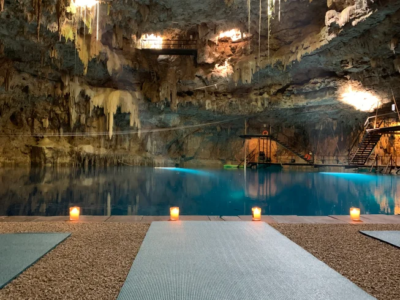
Tulum, Mexico Yoga Retreat-5 Day Yoga Retreat in Tulum Caribbean Beach Discovering the Magical Sacred Mayan Cenotes
Tulum, Mexico – Tulum’s combination of Mayan ruins, white sand beaches, and clear blue waters create a picturesque setting for yoga retreats.
- Byron Bay, Australia – This coastal town is known for its laid-back atmosphere and has a variety of yoga retreats that often include eco-friendly practices.
- Santorini, Greece – The stunning views and Mediterranean charm make Santorini a desirable yoga retreat spot, combining relaxation with scenic beauty.
Individual preferences may vary; therefore, different sources might rank these destinations differently. It should also be noted that the popularity and reputation of yoga retreat destinations can change over time due to various factors such as accessibility, economic conditions, and global travel trends. For the most recent information regarding the popularity of yoga retreats, it’s essential to consult current travel guides, wellness publications, or recent surveys of yoga practitioners.
Location, Location, Location!
What are the top 5 sacred yoga retreats or locations known as spiritual places for their transformative, high vibe, or healing qualities?
Many *locations worldwide are revered for their spiritual significance. They have become popular destinations for those seeking personal transformation, healing, and a high-vibrational environment, particularly within yoga and spiritual retreats. These places are often associated with natural beauty, historical religious significance, or a reputation for having an energetically charged atmosphere.
-
Rishikesh, India: Often referred to as the ‘Yoga Capital of the World’, Rishikesh is nestled in the Himalayan foothills beside the Ganges River. The town is considered sacred and is renowned for its spiritual atmosphere. It hosts the annual International Yoga Festival, attracting practitioners from around the globe.
- Bali, Indonesia: Known as the ‘Island of the Gods’, Bali is celebrated for its deeply spiritual culture, stunning landscapes, and tranquil environment. Ubud, in particular, is the spiritual heart of Bali, offering a variety of retreats that incorporate yoga, meditation, and traditional Balinese healing practices.
- Sedona, Arizona, USA: Sedona is famed for its vortex sites, which are believed to be energy centers conducive to healing, meditation, and self-exploration. The breathtaking red rock formations and unspoiled nature also help create a serene atmosphere for retreat-goers.
- Machu Picchu and the Sacred Valley, Peru: The Incan city of Machu Picchu and the surrounding Sacred Valley are known for their ancient ruins and majestic landscapes. The region holds a special place in Andean spirituality and is powerful for those seeking a connection with the past and the natural world.
- Mount Shasta, California, USA: Mount Shasta is considered a spiritual energy vortex and has long been revered by Native American tribes. Across various spiritual traditions, it is recognized as a sacred mountain with transformative and healing properties, making it a magnet for spiritual seekers and yoga enthusiasts.
When considering retreat centers or yoga programs, interested individuals often look for properties that combine these energetic qualities with elements such as eco-friendly accommodations, expert teachers, holistic wellness practices, and opportunities for community engagement.
Please note that the subjective nature of spiritual significance means that different people may have other experiences or opinions about what constitutes a “top” spiritual location. Therefore, travelers seeking such experiences should research current offerings and personal testimonies regarding these retreats to determine their fit for personal spiritual objectives.
For the latest information or changes after early 2024, please consult recent reviews, travel guides, or direct communication with the retreat centers.
Are you eager to discover the truth about purportedly transformative spiritual destinations? Visit ConsciousnessCalibrations.com and explore the calibrations of popular spiritual destinations here.
The Yogic Approach to Selecting Destinations
Contemplate the importance of location and setting in deepening your practice, from the vibrations of Rishikesh to the sacred silence of Bali.
The Yogic Approach to Selecting Destinations:
The yogic approach to selecting destinations for a retreat involves understanding the interconnectedness between the outer environment and the inner state of being. Many yogic traditions highlight the significance of the physical setting in spiritual practices and how surroundings can either support or hinder one’s progress on self-realization. This is not just about the aesthetic appeal of a location but its energetic quality and how it aligns with one’s spiritual needs.
Rishikesh, India, for instance, is a place charged with spiritual history and energy. As a town where the Ganges River flows and with a lineage of yogic wisdom stretching back through ages, Rishikesh captures an atmosphere that many believe can catalyze profound spiritual experiences. Pilgrims and yogis are often drawn here for the vibrational “Shakti” – a Sanskrit term for power or energy – which is felt to be more palpable in such holy sites.
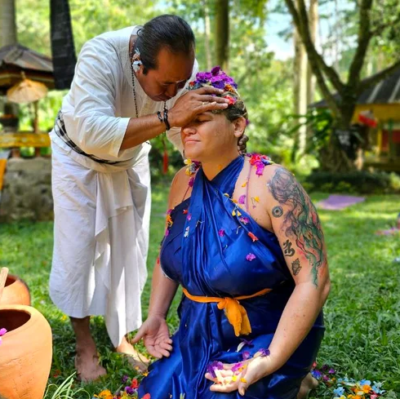
Bali Yoga Retreat-12 Day Healing & Wellness Yoga Retreat, Self-awareness Games, Sound Healing, Aroma Psychology, Bali
On the other hand, Bali, with its serene paddy fields, tropical climate, and culturally ingrained practice of Hinduism, offers a different but equally potent spiritual ambiance. The sacred silence here is not just a lack of noise but a presence of a peaceful frequency that hushes the mind and can help deepen meditation and yogic practices. The cultural practices in Bali, from the daily offerings to the temple festivities, can serve as a reminder of the sacred in everyday life, thus complementing the themes of yoga retreats.
Selecting a destination with consideration to the yogic approach would involve reflecting upon the elements that support one’s Sankalpa or intention. If a practitioner seeks to ignite transformation through the dynamic force of Kundalini, a retreat near the energy vortexes of Sedona might be seen as favorable. Alternatively, if one intends to cultivate mindfulness and peace, a retreat in the serene forests of Costa Rica or the tranquil ashrams of Rishikesh could provide suitable background energy.
Additionally, it is essential to consider the traditional elements of earth, water, air, fire, and ether, along with the senses, in the context of yoga. A place where the elements are balanced and harmonized with the senses can profoundly affect one’s practice. For example, the sound of flowing water, the sight of greenery, the feel of fresh air, the warmth of sunlight, and the spaciousness of open skies can all be grounding and uplifting for yogis, helping them to connect with nature and the elements within themselves.
The yogic approach to selecting a retreat destination is a holistic consideration of the external environment’s alignment with one’s internal journey. The resonance between the two can act as a catalyst for spiritual exploration and growth and contribute to fulfilling one’s Sankalpa during the retreat.
The Prana of Place
Understand the vital life force, consciousness, or prana in specific locales and how it can enhance your retreat experience.
The Prana of Place:
The concept of “Prana” in the yogic system refers to the vital life force or energy present in all living things; the breath, life, and vitality permeate the universe. In the context of a place, prana manifests as the live energy that can be felt in the atmosphere of a particular location. Just as the quality of prana within a person affects their vitality and spiritual health, the prana of a place influences the experiences and states of being of those who visit or inhabit it.
Places with a high concentration of natural elements, such as forests, mountains, rivers, and oceans, are often said to have vital prana. These natural settings provide abundant fresh air (which is a carrier of prana) and showcase the harmonious flow of life, which can enhance one’s connection to the natural world and its regenerative energies. Engaging in such an environment can serve as a reminder of the body’s rhythm and cycles, synchronizing one’s energy with the earth’s natural vibrations.
Check out my book review podcast of the “High Vibe” book The Nature Fix: Why Nature Makes Us Happier, Healthier, and More Creative.
Similarly, places designated as sacred by cultural traditions or spiritual practices may exude a different, yet equally tangible, quality of prana. Temples, monasteries, and other places of worship are often constructed in locations believed to be energetically potent. These places might be selected for their elemental balance, sites of natural energy vortexes, or their historical and spiritual lineage. Over time, such sites’ collective intentions and devotional practices create a rich tapestry of prana that can profoundly influence meditation and inner work.
When individuals select a yoga retreat, considering the prana of place as a core factor in their decision can be crucial. The energetic vibrations of the retreat location can greatly support or enhance the journey into self-examination, healing, and deepening of one’s yoga practice. It is believed that engaging with a high-pranic environment can facilitate the removal of energy blockages, assist in the cultivation of deeper states of meditation, and support physio-energetic cleansing processes.
Thus, when advising on retreat choices, one might encourage a practitioner to consider the subtle energy qualities of the destination. Acknowledging the prana of a place, its ability to nourish and rejuvenate, and to contain and augment one’s spiritual practice could play a pivotal role in the transformative potential of a yoga retreat. This alignment with a location’s energetic qualities could be the silent yet powerful companion on one’s path to serenity and self-realization.
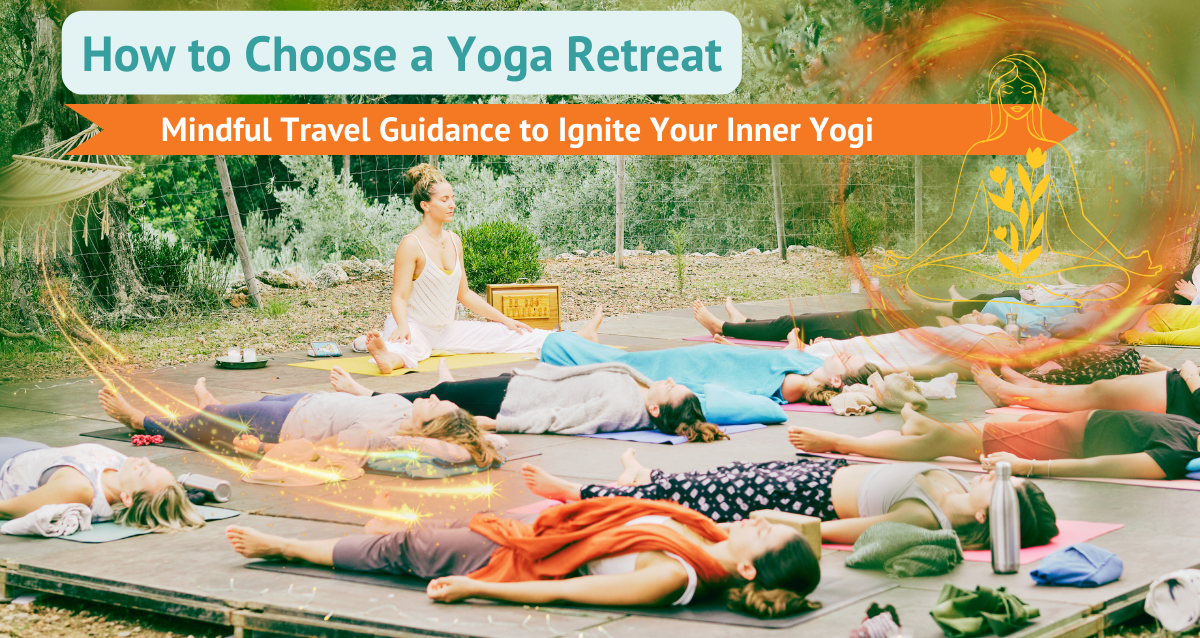
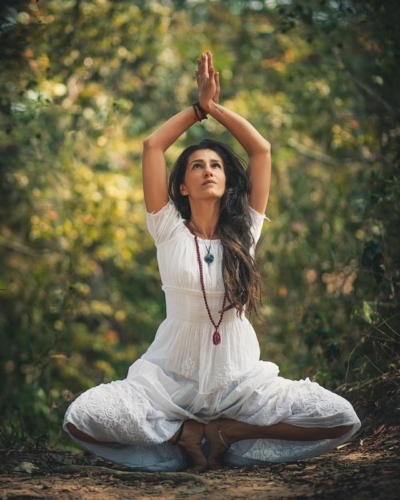








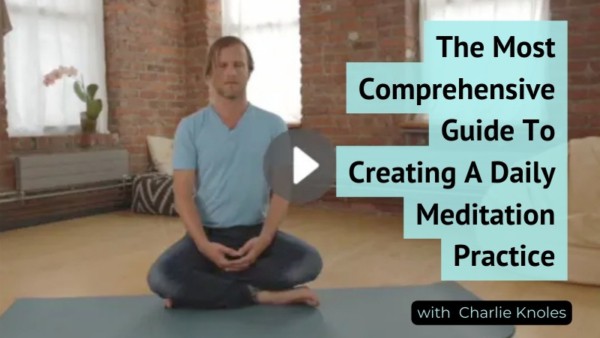






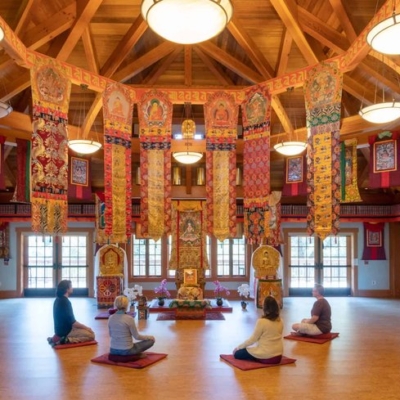





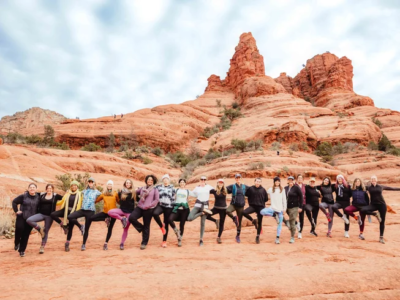

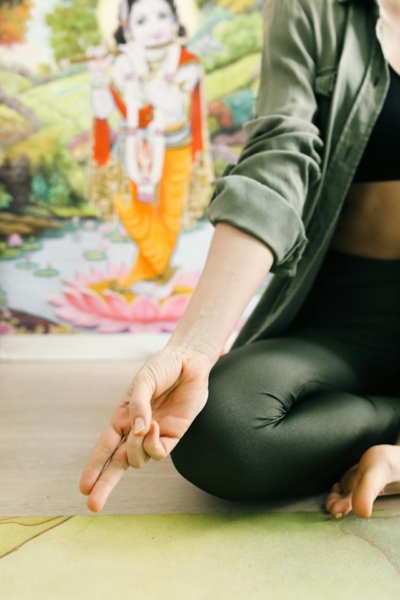
Leave a Reply